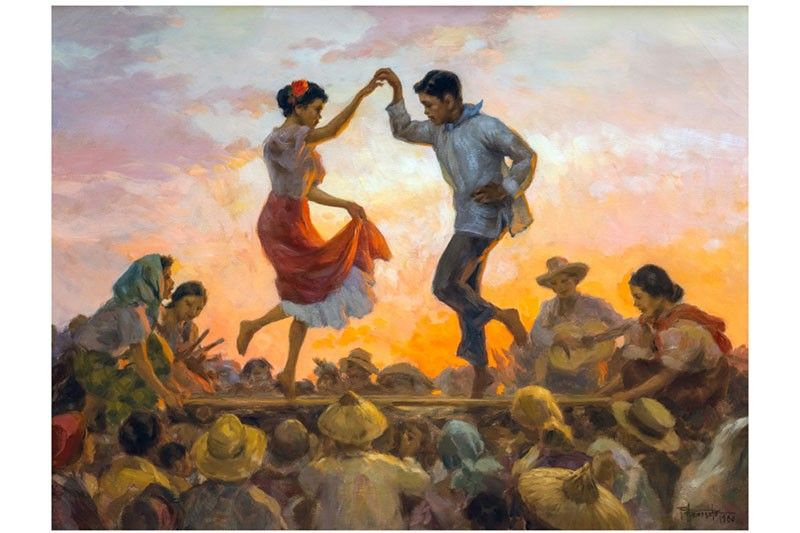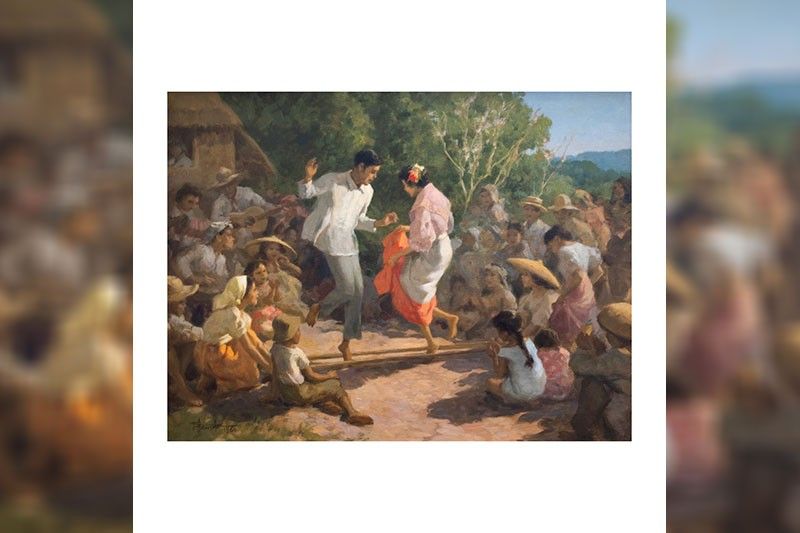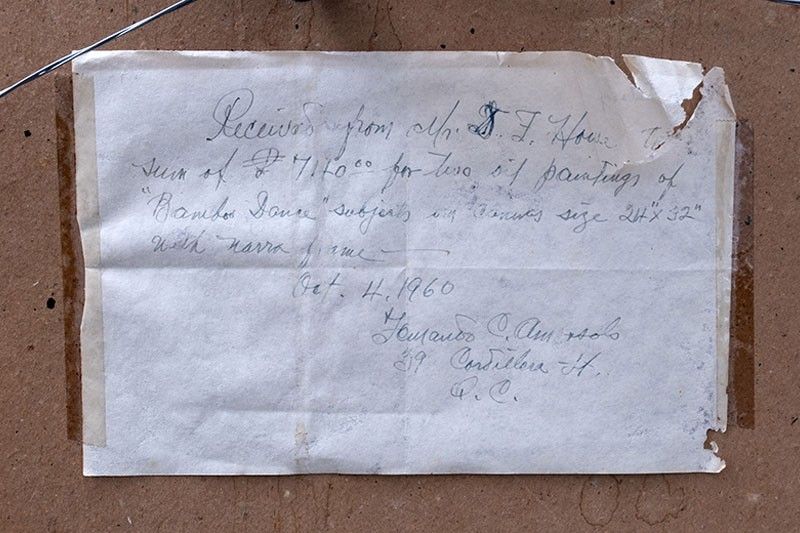Paintings back to front, stories on the reverse

Like visas on a passport, the marks of an artwork’s journey can be as important as its beauty. Exhibition labels, personal dedications, notes from the artist or its owner, even receipts for payment — all are important clues to a painting’s pedigree and provenance.
One of the most tantalizing pieces in Leon Gallery’s upcoming “Asian Cultural Council Auction” this March 9 is an assemblage by Alfonso Ossorio, handpicked as a gift to fellow artist and, what’s more, fellow “heredero” or scion, Fernando Zobel. Ossorio and Zobel had plenty in common: the same patrician upbringing and education on the American Eastern Seaboard; both were visionary ex-pats who had a front-row seat to Abstract Expressionism’s rise in New York, and that would also make Zobel the founder of the Cuenca group in Madrid. Written on the back of this mixed-media masterpiece, along with the title “#12 ’67 (Arimula),” is the boldly painted dedication “For Fernando Zobel” under Ossorio’s name.
Ossorio would be descended from one of the last great Filipino sugar barons. He had a vast and picturesque estate in the Hamptons, later acquired by the man who ran Revlon. His buddy Jackson Pollock would later run into a tree and perish on the way to one of his fancy dinners there. This was the world that both Zobel and Ossorio inhabited.

To be found on the reverse is an exhibition sticker from the haughty New York gallery, Cordier & Ekstrom. That scrap of paper would lead to a delightfully mischievous review in the New York Times of the Ossorio exhibition where this particular piece appeared in March 1967: “You would hardly think that Mr. Ossorio could have found time, since his last show, to stick together the thousands of glass eyes, beads, and mirrors, animal horns, shells and unidentifiable objects that make up his assemblages,” the author John Canaday would write. “But here is another big show in his devilishly gaudy manner… He seems more than ever to be creating decorations and votive objects for an expensive and high-spirited pagan ritual — to be performed, of course, in the best society.” Two pieces of cutlery in fact accent the work, perhaps a subtle nod to the proverbial silver spoons that both men were born with.
The system of documentation adopted by the Philippine Art Gallery, which happened to be the country’s first all-out champion for abstract art in the 1950s, is always a mine of information. Each work was listed and numbered chronologically, with title, medium and owner indicated. The journey of one work by Nena Saguil, “Still Life No. 2,” begins with its PAG Number, 650, scrawled on its reverse. These details would lead to the discovery that this luscious spread of macopa and mangosteen, duhat and suman would, in fact, travel to the PAG’s first exhibition in New York City, where it was displayed alongside the works of H.R. Ocampo and Vicente Manansala. That would make it a valuable relic not only of this female artist’s past but also the trajectory of the iconic PAG, a touchstone event in Philippine art.

In an age when paintings by the masters are punctuated with seven zeros, it’s always astonishing to see the petite pricetags these masterpieces once had. Two Fernando Amorsolos from his beloved “Tinikling” series come with a receipt in the maestro’s own hand for the sum of P740 for the pair or just P370 each. It’s proof that the buyer — a certain Mr. Dennet Howe, then-president of Procter & Gamble Philippines — not only had good taste but like every good CEO, was judicious in his spending. (The amount not in a round number suggests he had asked and was given a P10 discount.) Mr. Howe commissioned two of the “Tinikling” or “Bamboo Dances,” one depicted in the daytime and another, rarer still, at dusk.
A beauty from the Eugenio Lopez Collection also in this auction includes — among the overload of precious Joya, BenCab, Manansala and Arturo Luz pieces amassed by Don Geny — is a work by cutting-edge female artist Phyllis Zaballero titled “Pas de Deux Red.” In this case, a quatrain titled “Skygazers” by the renowned poetess Marjorie Evasco is written on the back of the painting: “Balanced between words, Attuned with silence, The feelings dance a pas de deux of self, By and to another self revealed.” Notes such as this can only add deeper resonance and insight to an abstract work, making its intention clear.
To be a “book piece” — that is, a work published and with an accompanying photograph — makes any painting even more valuable. A Juan Luna (one of three in the upcoming sale) comes with a photograph from religious magazine Cultura Social from the 1930s, in the collection of the Filipinas Heritage Library. Entitled “Ecce Homo,” after Pilates’ taunting words to a tormented Christ, it was featured twice-over, once on the cover and also in the inside pages. Luna would have the misfortune of being arrested for complicity in the Philippine Revolution at its outbreak in 1896; and would be released only after he received a pardon on the Spanish King’s birthday the following year. He presented this work to his captor, Don Nicolas de la Peña, the 19th-century equivalent of our Secretary of the Department of Justice, upon his release from Fort Santiago. (De la Peña had read Rizal his death sentence just months before — is it Christ, or Luna, or perhaps even Rizal, all innocent men depicted in this work?)
Photographs from the legendary Alfonso R. Ongpin collection gave the gorgeous Felix Resurreccion Hidalgo view of sailboats skimming a European bay its name, “Barcos de Vela.” Two existing photographs of similar artworks have the title written by Ongpin at the top.
Indeed, newspapers, photos, labels and the flotsam and jetsam of art complete the thrill of treasure-hunting, making each work and its journey more precious.



















